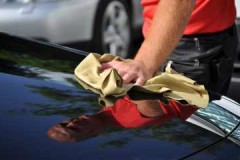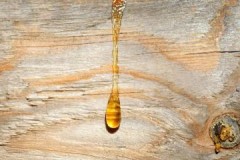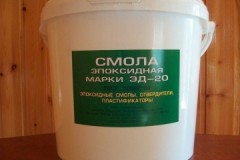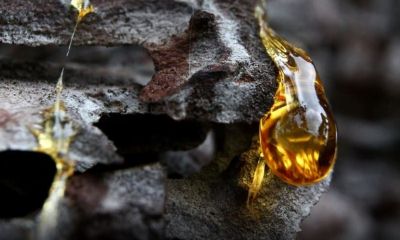 Epoxy or wood tar stains are among the most difficult contaminants to remove.
Epoxy or wood tar stains are among the most difficult contaminants to remove.
The sticky tacky substance has very good adhesion to all surfaces.
When choosing how to wipe off the resin stain, you need to consider its type, the size of the affected area and other factors.
With the right approach, using homemade recipes and special tools, the resin can be removed.
Content
What's the first thing to do to wipe off the stain?
 Small tar spots that have not had time to dry are much easier to remove. If you act quickly, the likelihood of removing contamination without a trace increases.
Small tar spots that have not had time to dry are much easier to remove. If you act quickly, the likelihood of removing contamination without a trace increases.
When resin only gets on clothing, skin or other surface, it is necessary to try to immediately remove as much of the adhesive mass as possible.
This must be done very carefully, without smearing the stain over an even larger area. It is convenient to use a napkin or rag for this purpose.
The thick mass, while it is fresh, can be pry off with a scraper or a regular spoon. After most of the resin has been removed, a trace may remain on clothing or other items.
Before proceeding with further processing, the soiled thing must be prepared - clean off dust and dirt... You also need to decide which remedy is suitable for dealing with the stain based on the type of resin and type of material.
How can you remove a stain with folk remedies?
Despite the fact that resin is a complex contaminant that adheres very tightly to various surfaces, it is quite possible to remove this substance even with simple means.
Vegetable oil
Sunflower or other vegetable oil can be used as a solvent... A good result can be achieved when the resin has not had time to harden.
Alcohol
Alcoholic liquids can be used as a tar remover. The best option is pharmacy alcohol. If the stain is small, then it will be enough to apply the product to the sponge and rub. Slightly dried spots are best soaked first.
Petrol
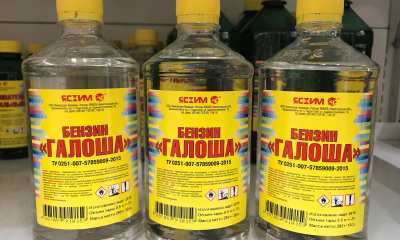 Refined gasoline is often used in the home as a solvent.
Refined gasoline is often used in the home as a solvent.
It is applied to a napkin and moisturizes the stained area well. so that the resin begins to separate.
For more effect, a napkin soaked in gasoline can be left on the stain for a quarter of an hour. After that - the area with the stained place is rubbed.
Acetone
Acetone can be used to eliminate the gum trail. A technical one or one that removes nail polish is suitable. The product is applied to the stain, rubbed, kept for several minutes, rubbed again.
Ammonium, turpentine and starch
An effective, and at the same time non-aggressive agent is a mixture of starch, turpentine and ammonia. Cooking procedure:
- Prepare a container for mixing the components.
- Pour in 1 tsp. ammonia.
- Add 1 tsp. turpentine
- Add 1 tbsp. starch.
- Mix all ingredients.
Exposure to temperature
The resin hardens when it cures... It is possible to remove it by acting on low or, conversely, high temperatures. Heat or freeze methods are basic and very effective in removing tar.
Freezing
Exposure to low temperatures allows the cured resin to become brittle. After freezing, it can be crumbled and cleaned off. This method is suitable for clothes that can be placed in the freezer for a couple of hours.
Heat
 If freezing is not possible, the resin can be removed by heating... Under the influence of high temperatures, it will begin to melt and will be easier to remove.
If freezing is not possible, the resin can be removed by heating... Under the influence of high temperatures, it will begin to melt and will be easier to remove.
This method is suitable for some fabrics that can withstand heat. It is convenient to use an iron for these purposes.
In this case, it is necessary to ensure that there is always a cloth or paper towels between the resin and the sole of the iron. Otherwise, the mass, which has become viscous, will begin to stick to the iron and smear.
As the resin warms up and transitions to paper, they should be replaced with clean... Before practicing heating, it is necessary to clarify on the tag to the thing the maximum exposure temperature that is suitable for the given fabric.
How to remove with special compounds?
How else can you remove tar stains? In addition to the helpers, special means can be used to remove the resin. These are commercially available preparations, completely ready for use.
Beckmann stain remover
One of the means for removing tar from clothes is TM Beckmann stain remover. It is designed to remove from the fabric not only resin, but also technical oils and bitumen.
The drug is applied to the stain undiluted and left to act... In this case, it is necessary to control so that the composition does not dry out. After the stain remover has started to work, the area with the stain is cleaned, removing the remaining dirt with a damp cloth. The price is about 200 rubles.
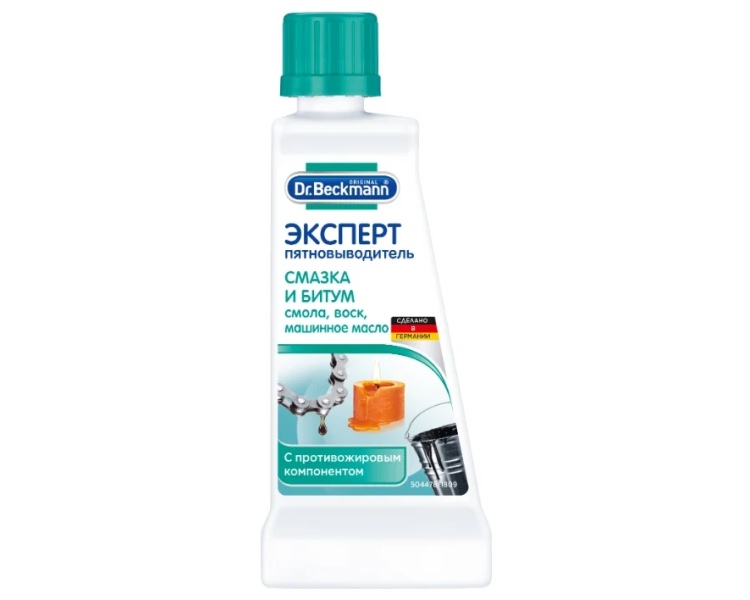
Sonax cleaner
Sonax is intended for cleaning the car body from wood resin and organic pollution from birds. The product can be used on paintwork, chrome-plated parts, glass, plastics, including for cleaning all types of headlights.
In addition to being used for cleaning cars, Sonax is also suitable for processing other surfaces - window panes, bicycle frames, etc. The drug is used according to the instructions. The price of a bottle is 0.4 liters. - about 750 rubles.
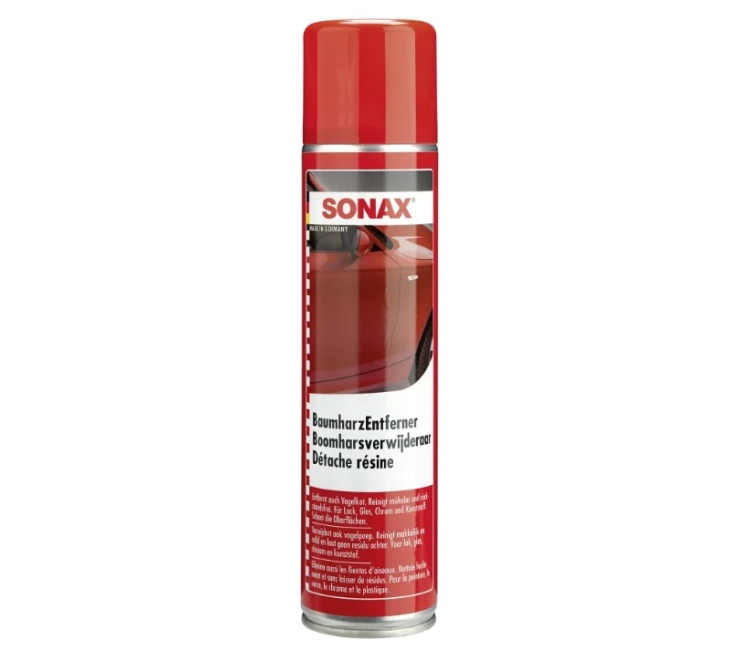
Mellerud
The product is intended for cleaning surfaces from:
- glue,
- resin,
- soot,
- fat, etc.
A cleaning agent can be used:
- stone,
- wood,
- fabrics,
- PVC,
- ceramics.
Repeat the treatment if necessary.The price is about 500 rubles.
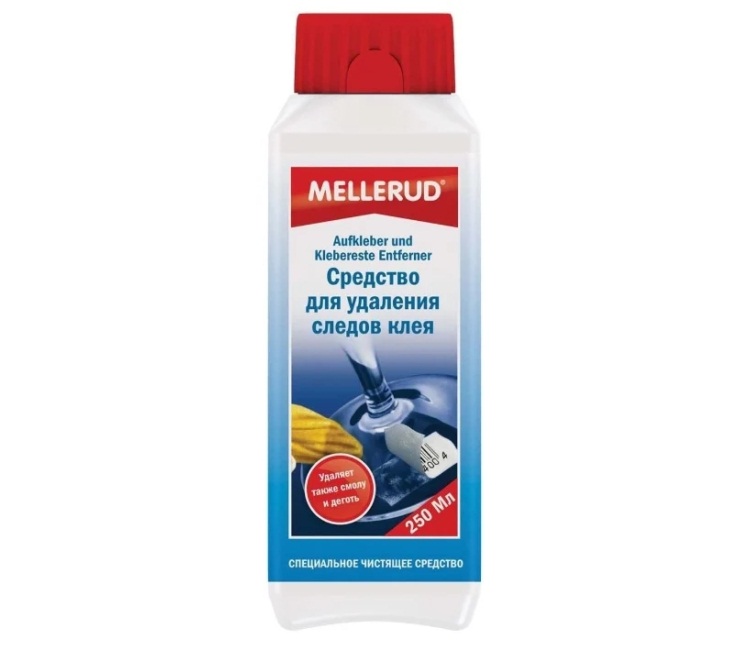
Removal features
Depending on where exactly the resin got to, the appropriate method of exposure is selected, which is most suitable for a particular case.
From hair
In cases where viscous drops have fallen on the head, you must act very carefully. After the maximum amount of adhesive has been collected, sunflower oil, body lotion or fat cream should be applied to the strands.
Softening, the substance will become pliable, and it can be pulled down in a strand.
Will tell you more this article.
Skin
It is recommended to remove the resin from the skin, as well as from the hair, using fatty, oily formulations.... For this, baby oil, greasy face cream, vegetable oil and even mayonnaise can be used. How to remove tar from your hands, read here.
Car
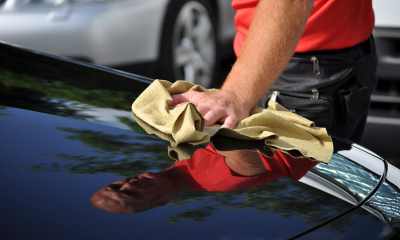 Most often, the car suffers from the ingress of tree resin and sticky plant buds on it.
Most often, the car suffers from the ingress of tree resin and sticky plant buds on it.
The best option in this case is special auto chemical products... Before using the drug, it is necessary to clarify all the information on the package with the product.
You can find out how to wipe tar off a car here.
Fabrics
It is necessary to wash the resin taking into account the material from which the thing is made. This is a very important point, as an unsuitable product may be ineffective or even damage the tissue itself.
For cleaning, solvents such as gasoline, kerosene can be used... Stain removers are also a good option. Read about how you can remove tar from clothes. here.
Boards, benches, benches on the street
It may be necessary to remove the resin from the board before using it in construction, finishing work, etc. Areas of wood with sticky mass flowing out differ in color.
Such solvents will help to cope with resin:
- White Spirit;
- turpentine;
- refined gasoline;
- acetone, etc.
Read more in this article.
Wool of dogs, cats, other animals
 If your pet gets dirty with tree resin, then you can use the following methods to eliminate it:
If your pet gets dirty with tree resin, then you can use the following methods to eliminate it:
- Cut off the affected piece of fur.
- Apply vegetable oil and try to gently pull out the resin.
- Use hypoallergenic body lotions.
If the animal gets dirty with epoxy, then you can carefully cut off the stuck together wool. Or use alcohol-based products to remove.
Circular saw
Resin can build up on the saw blade teeth and solders during operation. How to deal with it is clearly seen in the video:
From glass
One of the solvents will help remove tarry stains from glass:
- White Spirit;
- acetone;
- alcohol, etc.
A good effect is also provided by auto chemistry preparations from resin.
Grinding wheel
The procedure for cleaning the grinding wheel can be seen in the video:
Resin type: what does it affect?
Resins that can cause stains, can be divided into two main groups:
- Synthetic.
- Natural.
Despite their different origin, all of them are distinguished by high adhesion and tackiness.
Epoxy
Epoxy is a synthetic substance... Get it chemically. This resin is used in repair work, construction, etc. Upon contact with the hardener, the epoxy hardens and becomes resistant to external influences.
He will tell you how to remove epoxy from various surfaces this article.
Woody
Wood resin is a thick, dark, viscous liquid... It is distinguished in large quantities - pine, birch and some other types of trees.
Prohibitions
There are some prohibitions to keep in mind when removing the resin:
- It is possible to remove the adhered substance with the help of sharp objects, for example, a knife, only in limited situations - to cut off the "drop" itself. In other cases, the use of a sharp object is not desirable, since it can damage the base material itself.
- It is not advisable to use solvent chemicals for cleaning hair and hands. Aggressive agents can lead to irritation, cause an allergic reaction and even provoke the appearance of wounds.
- If the chosen remedy for removing tar did not help, and you plan to use another, the previous one must be washed off.
- Do not use force when removing the sticky layer from the surface - this can damage the surface.
- Do not rush to wash the stained fabric product, since the resin is not removed by ordinary washing.
Recommendations
In order to remove the resin efficiently and without any unpleasant surprises, the following tips are recommended:
 Before using a special product, make sure that it is designed for the specific resin and can be applied to the type of surface that is affected. Information on this can be found on the packaging.
Before using a special product, make sure that it is designed for the specific resin and can be applied to the type of surface that is affected. Information on this can be found on the packaging.- The sooner you start removing dirt, the more chances it will be removed without a trace.
- Before taking up the removal of the trace on the fabric, the stain must be localized so that the resin does not spread over an even larger area.
- When removing a stain, it is necessary to move from the edge towards the center of the mark.
- Do not allow the sticky thick substance to spread over the surface of the material. If it gets on the fabric, the material can be moistened around the perimeter of the mark so that the stain does not become even larger.
Conclusion
If the question arises of how to wipe off the resin, you can use folk recipes, thermal methods of exposure and special purchased preparations. Each method has limitations that must be taken into account.


